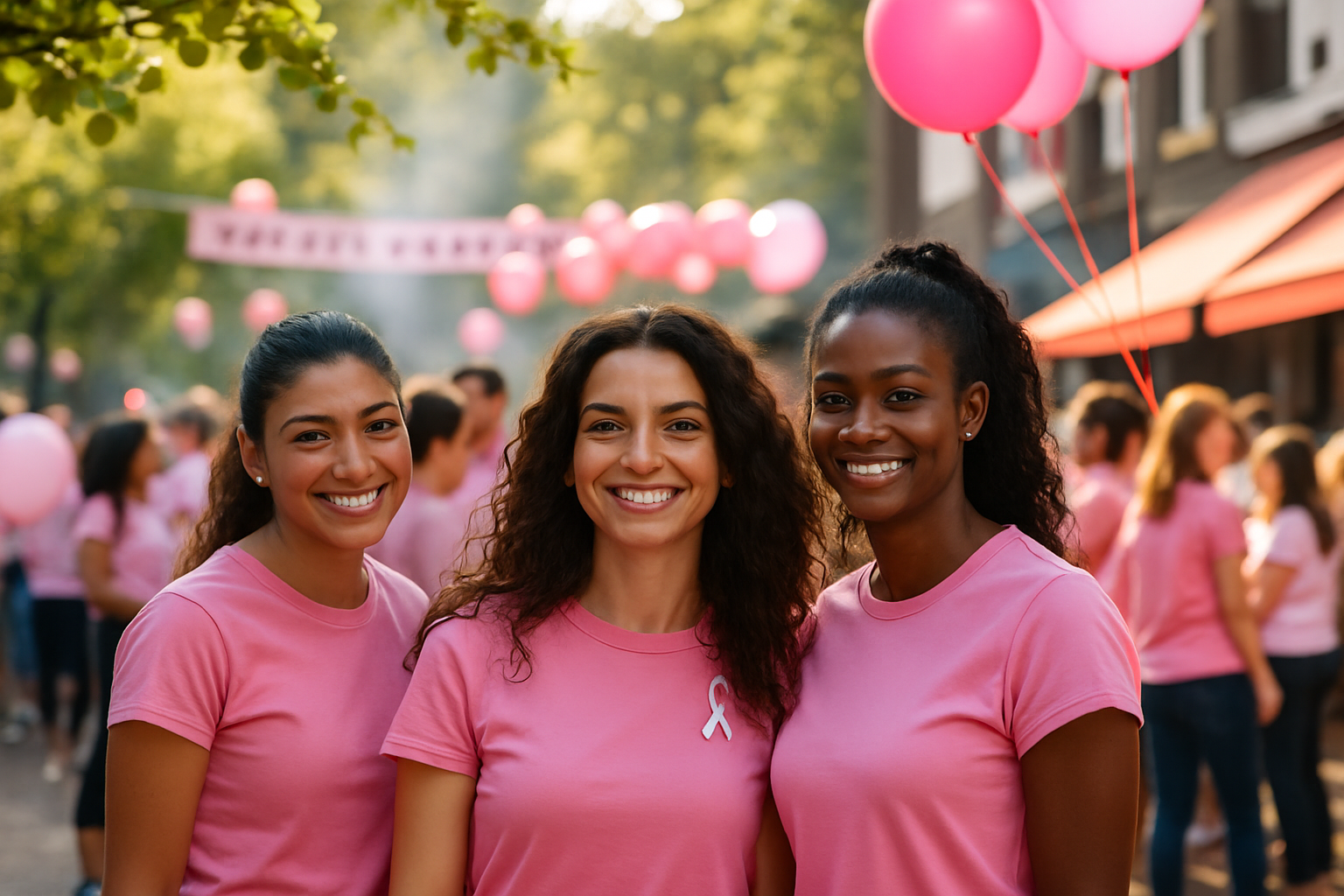Dear friends,
For 40 years now, October has meant pink everything, from ribbons to football cleats to grocery store displays. And while I appreciate the power of awareness campaigns, I’ve been thinking: have we let the message about breast cancer get too comfortable?
Awareness is where the conversation starts, but action is what saves lives. So, schedule the appointment. Follow up on the test. Ask the uncomfortable questions. Encourage someone else to do the same.
Let’s face facts, roughly 1 in 8 women will face this disease at some point in their lives. Breast cancer remains the most common cancer among women in the U.S., excluding skin cancer. And while we’ve wrapped it in pink for decades, it’s time to ask: are we doing more than just being aware?
This year alone, more than 316,000 women will be diagnosed with invasive breast cancer. That’s not counting tens of thousands more with the early-stage, non-invasive forms. The reality is that about 42,000 women will die from breast cancer this year.
Did you know that Black women have the highest death rate? This is in large part because Black women have a higher risk of being diagnosed with triple-negative breast cancer. This type of breast cancer is often difficult to treat and more likely to recur after treatment. But, it’s also about systemic barriers for Black women, such as delayed diagnoses, less access to quality care, and being less likely to be heard when something feels wrong.
The statistics I named about the prevalence of breast cancer come directly from the American Cancer Society. They serve as a sobering reminder that we’re not even close to being past this. But we do need to shift the narrative from awareness to action, and from passive pink ribbons to proactive pink prevention.
We also need to expand the conversation, because breast cancer doesn’t only affect women over 50, or people with a family history, or women at all. Men can get breast cancer, too. Around 2,800 men will be diagnosed this year. That’s not a large number, but when you’re the one getting the diagnosis, statistics don’t matter. So, lean in to your partner who may mention a lump in his breast and get him to his primary doctor right away for a check-up.
It’s that gap between knowing and doing that is the point of my message to you.
Let’s take Ananda Lewis. I am still disheartened to hear about her death from breast cancer. She was a media personality, a mom, and a vibrant force. She also delayed mammograms for years, fearing radiation exposure. When she eventually found a lump, it was stage 3. Even then, she chose holistic therapies over conventional treatment. Later, she was open about her regret.
By the time Ananda shared her story publicly, the cancer had progressed to stage 4. And earlier this year, she passed away at just 52 years old. Her honesty about her decisions, her fears, and her desire to warn other women moved me deeply. She didn’t sugarcoat anything; and that to me is the kind of awareness that matters.
You know, we don’t talk enough about what fear does to our mental health and our health decisions. Just imagine what the fear of mammograms, the fear of being diagnosed with cancer, the fear of losing a breast or being seen differently, or the fear of facing our own mortality can do to your everyday light. It could lead to paralysis. But ignoring it doesn’t make it go away. I say this not just as a doctor, but as a woman: the sooner we face it, the more power we reclaim.
So what can we do with this awareness? Here’s what I’ve told my patients, and what I try to practice myself:
-
Know your normal.
No one knows your body like you do. If something looks, feels, or seems different, please don’t ignore it. That includes lumps, changes in skin texture, nipple discharge, or pain that doesn’t go away. Listen to your instincts. -
Talk to your provider early and often.
Screening guidelines vary based on age, risk, and personal history. Most women should begin annual or biennial mammograms by age 40, but some may need them earlier. Talk with your doctor about what’s right for you. You don’t need to wait to be told. -
Don’t assume you’re not at risk.
Most people diagnosed with breast cancer do not have a family history. Genetics matter, but so do lifestyle, age, and plain old biology. Risk isn’t always visible. It’s worth asking your doctor to assess your personal risk. You might benefit from earlier screenings, genetic counseling, or additional tests based on your health history. -
Encourage the men in your life, too.
If a man has a family history of breast cancer, especially BRCA1 or BRCA2 mutations, he should be aware of his own risk. Men often overlook early signs, which can lead to later diagnoses. -
Face the fear, but don’t freeze.
It’s natural to fear the mammogram, the biopsy, the waiting. But fear isn’t a reason to delay. When we let fear drive the car, we risk losing control altogether. Ananda Lewis said it best: “Prevention is the real cure.”
Here’s what I want you to remember during this Breast Cancer Awareness Month: awareness is where the conversation starts, but action is what saves lives. So yes, wear your pink. Walk for the cure. Share the survivor stories. And also, schedule the appointment. Follow up on the test. Ask the uncomfortable questions. Encourage someone else to do the same.
This is not just a “women’s issue.” It’s a family issue, a community issue, and a human issue. Remember that breast cancer doesn’t have to be a death sentence. With early detection and informed choices, we have tools that generations before us didn’t.
Awareness that stays in your head doesn’t save lives. Action does. So if this message resonates with you, don’t keep it to yourself. Share it and start a conversation, not just in October, but always. Your voice might be the nudge someone else needs to take that first step.
With your health in mind,






